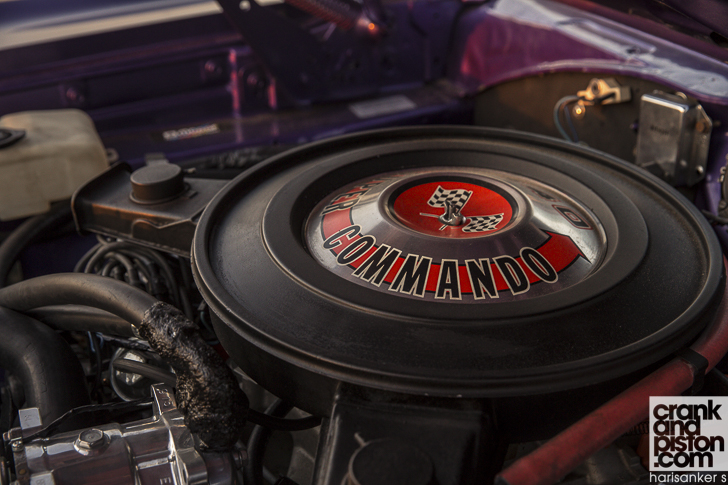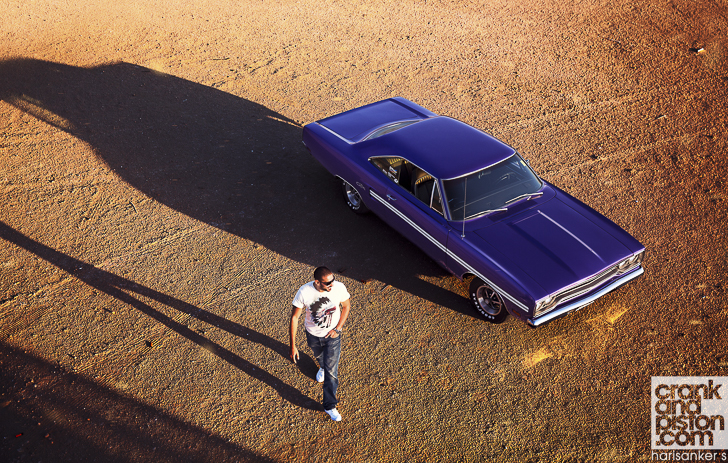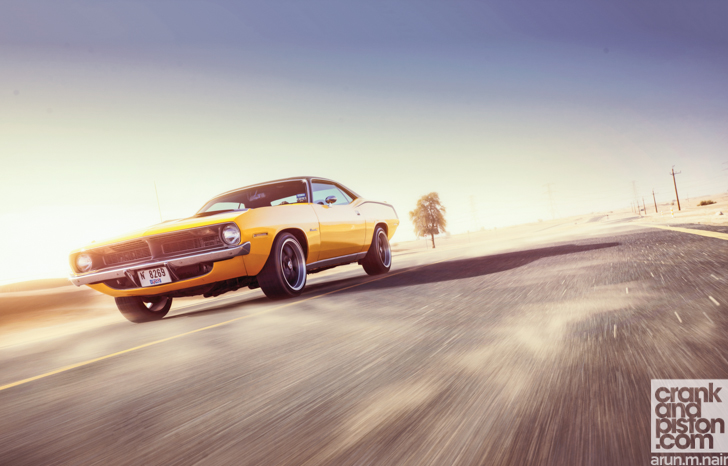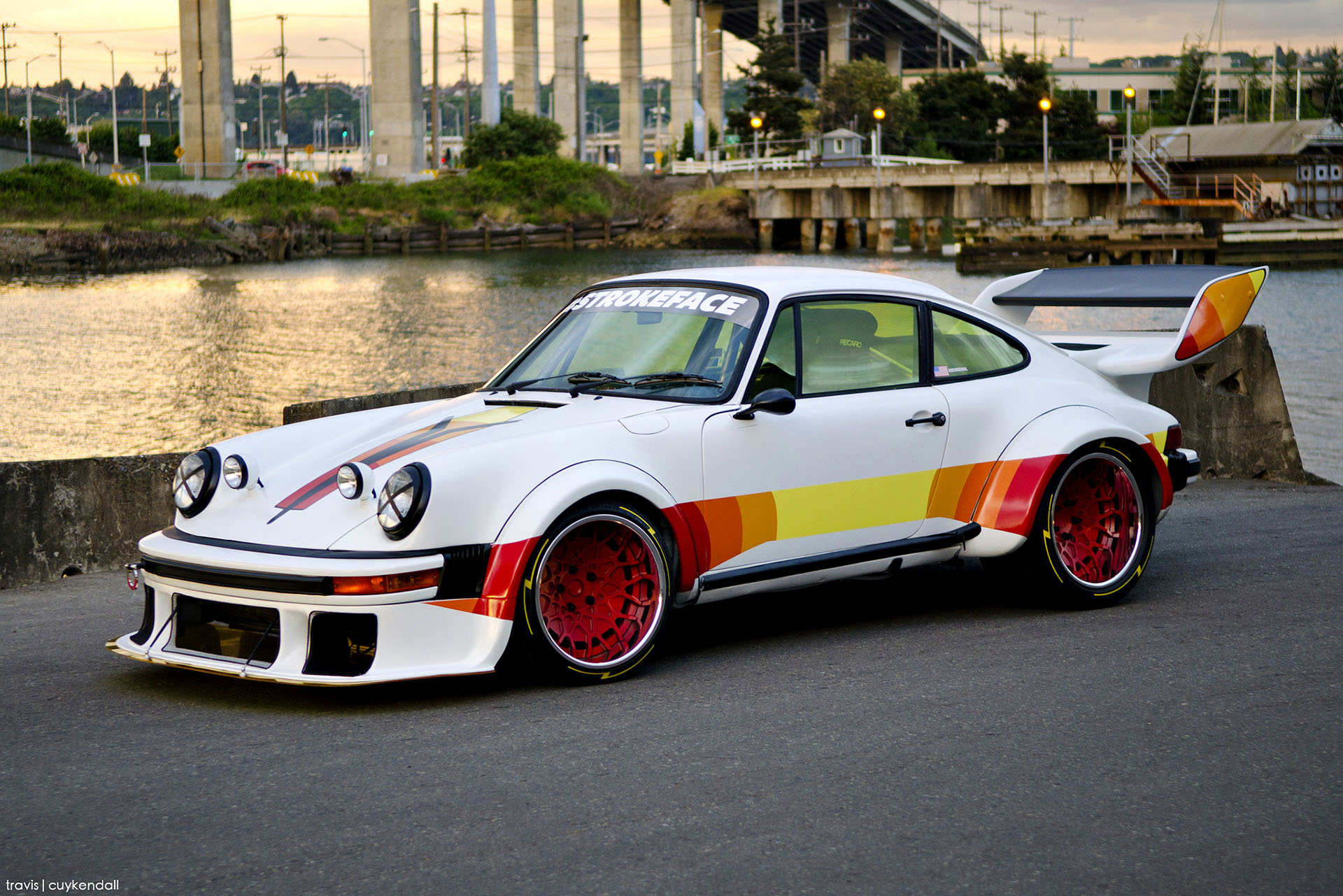As I’ve previously discovered though, classic car drives are rarely straightforward, and as expected, Nader has a few niggles to walk me through.
For starters, the steering is a little loose and the service is not booked for another few days yet, “so make sure you don’t take her round a high-speed corner, or you’re done.” A few rubber mounts also need to be replaced in the engine bay to stop the bruiser vibrating. And I’ve been asked not to go too far above 5000rpm since the engine temperature has already spiked a couple of times today, but there’s a wry grin though as he says this, and it’s also suggested, where possible, that I should gun it. “The previous owner fully restored the engine back in 1997. All Elderbrook components. You can feel the wheels spin with almost no effort.” Suddenly the words “spit you off the road” come screaming back to mind…
Fortunately today’s play area is a deserted stretch just outside the city limits, where only a few locals have started to set up for a weekend’s camping on the dunes. I’m quite relieved by this, since now I won’t have to be wary of traffic: there’s no wing mirror on the passenger side, and though I can see a considerable amount over my left shoulder thanks to the slim b-pillars, the circular driver’s mirror is pretty much useless, as all I can see is a very purple door panel.
“The shifter for the transmission is a unique design: I have to cradle my hand around it like one would hold a large brandy glass”
It’s tempting to laugh, but with the GTX, there is a lingering, I’ll say, ‘threat’ beneath the surface as I turn the ignition and fire the 375bhp 440 into life. Quickly I can feel those wild horses starting to get restless. There’s a tangible rock that can be felt right through the chassis, even despite the enormously comfortable leather seats: were there a more sizeable power dome, I’m sure it would be rocking furiously side-to-side under heavy acceleration. Speaking of which…
The shifter for the transmission is a unique design, angled at 45 degrees and the gear knob at a perfect 90 to the dashboard: to shift from Park to Drive, I have to cradle my hand around it rather like one would hold a large brandy glass. Once in Drive, there’s a more assertive ‘bump’ of torque through the brake pedal as the engine lets me know it’s ready to go. I barely have to lift before the wheels are already moving. Having done my apprenticeship in the Barracuda, I’m more confident from the off in the GTX, and give it a semi-bootful quickly (I may be more confident this time but I’m not a raving lunatic). The ‘rock’ permeating through the chassis suddenly becomes much rock-ier as the 440 barks 425bhp to the back wheels, which almost light up.
For a gentleman’s muscle car, there’s some serious guts being thrown around here. The automatic gear changes – there’s no manual alternative – keep the revs nice and high before shifting, acceleration as a result on the sharp side of linear. Even despite the meticulous condition of the cabin, there’s not a huge amount of noise insulation, and even CCR can’t quite hold back the low, guttural rumble of the V8 and the ever-present wind and road noise. I would cast my eye down to check the rev counter were my eyes not glued to the approaching horizon, but I can at least see the speedometer. We must be in the triple digits, absolutely we must: 48mph…so that’s…wait…hang on, that can’t be right…
Nader’s right. Already, in the space of only a few hundred yards, the GTX feels so much more visceral, more alive than the Barracuda, despite the refinement of the interior. And it’s utterly superb. Almost immediately the GTX is drilling power into the road, and part of me wishes I actually had gunned it from the off, if only to see the trail of exploded rubber following me in the rear view mirror. Already this feels like a proper 1970s muscle car. And on that note…
Although there’s ample stopping power – just about – on my approach into the first corner, I find there’s a huge amount of travel in the pedal itself and little feel: every so often, in trying to pick my braking points, I brake too late, snatching the discs as a result. And then there’s the handling. In fairness, Plymouth had substantially overhauled the power-steering from the GTX’s Belvedere base, continuing to fine-tune the system in the intervening years in the hopes of further improving the handling. There’s still plenty of give and a high centre of gravity though: at one point – Nader’s warning temporarily forgotten – I take a sharp left hander too quickly, and have to dig my knee into the transmission tunnel for fear of sliding into the passenger seat.
“Almost immediately the GTX is drilling power into the road. Part of me wishes I’d gunned it from the off, if only to see the trail of exploded rubber following me”
Yep, as a 1970s American muscle car, handling is not the GTX’s finest quality. The steering is similarly tumultuous, since it’s somehow over-servoed and responsive in equal measure as the inconsistent weighting continues to throw me off: at centre, there’s a gulf of play in the wheel, though the weight suddenly changes at as I apply lock, making it difficult to get any kind of consistency, not what I’m looking for as my mind is still trying to convert the MPH speedometer…59mph…seriously? Into another sharp corner, and once again the over-servoed steering plays it’s hand, John Fogarty’s vocals just about loud enough to drown out the tyre squeal. It’s getting dark, and if I’m not careful, there most certainly will be a bad moon rising if I stack Nader’s pride and joy.
Fortunately the man himself, following close behind in our Volkswagen Golf camera car, doesn’t seem too concerned: as I stare into the rear view mirror – which vibrates violently as the V8 continues to rock the chassis – I can see that grin staring back at me: it’s briefly replaced with a laugh as I miscalculate my braking point and have to stand on the pedal. There’s little doubt the GTX belongs in a straight-line, and once I’ve stopped pratting around through the corners and found some straights, I can start enjoying the timbre of that basy engine note and the guts of that 440. Feeling braver, I pull up, check what visibility I can in the mirror, and plant my right foot.
The rumble of the V8 is replaced altogether as the revs leap up, replaced with a much deeper, more bellowing roar, almost as if I’m trodden on the V8’s tail. There’s little sense of forward momentum though as all power is thrown at the rear wheels, which quickly go mental, skewing side-to-side and threatening to snap the chassis in half. I saw at the inconsistent steering as best I can to regain some element of control, but it’s no use. Already I can feel the maniacal V8 stamping its authority on this particular drag strip, and while I’m tempted to see what limits there are to be tested, I think better of it. There are some monsters you just can’t tame.
I’ve driven more powerful muscle cars – hell, I’ve driven more powerful hatchbacks – but there have been few models I’ve experienced that invite this sense of nostalgia, this sense of character, this reflection of a generation now gone. The power from that big block is solid rather than spectacular by modern standards, and yet simultaneously unforgiving in the manner in which it is put down, delivering raw, angry turns of speed with little regard for the civility of those in the cabin. It’s the kind of thing that inspires, well, déjà vu. Funny that.





